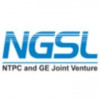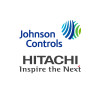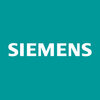Filter interviews by
Swegon Blue Box Mechanical Engineer Interview Questions and Answers
Swegon Blue Box Mechanical Engineer Interview Experiences
1 interview found
I applied via Referral and was interviewed before Jun 2022. There were 2 interview rounds.
(2 Questions)
- Q1. Basics design consideration while designing any products.
- Q2. Types of fits, and differences between them e.g.: Clearance & interference.
- Ans.
Types of fits include clearance and interference fits, each with different characteristics.
Clearance fit allows for clearance between the shaft and hole, providing easy assembly and disassembly.
Interference fit has interference between the shaft and hole, creating a tight connection with high friction.
Transition fit falls between clearance and interference fits, providing a balance between clearance and interference.
Ex...
(2 Questions)
- Q1. Types of compressors.
- Ans.
Types of compressors include reciprocating, rotary screw, centrifugal, and scroll compressors.
Reciprocating compressors use pistons to compress air.
Rotary screw compressors use two rotating screws to compress air.
Centrifugal compressors use a rotating impeller to compress air.
Scroll compressors use two interleaving scrolls to compress air.
- Q2. Explain the vapour compression cycle.
- Ans.
Vapour compression cycle is a thermodynamic process used in refrigeration systems to transfer heat from a low temperature to a high temperature environment.
The cycle consists of four main components: compressor, condenser, expansion valve, and evaporator.
Refrigerant is compressed by the compressor, increasing its pressure and temperature.
The high-pressure, high-temperature refrigerant then flows to the condenser where ...
Interview Preparation Tips
Have your basics clear about HVAC.
Skills evaluated in this interview
Top trending discussions






Interview questions from similar companies

Mechanical Engineer Interview Questions & Answers
ABCI Infrastructuresposted on 12 Nov 2024
I applied via Referral and was interviewed before Nov 2023. There was 1 interview round.
(2 Questions)
- Q1. Why will we hire you on this company?
- Q2. Because i am capable of any challenging work given by company.
Interview Preparation Tips

Mechanical Engineer Interview Questions & Answers
Tagros Chemicalsposted on 20 Oct 2023
I applied via Walk-in and was interviewed before Oct 2022. There were 2 interview rounds.

(2 Questions)
- Q1. All the questions is focusing on mechanical seals and pumps.
- Q2. Ejector system working.
- Ans.
An ejector system is a device that uses a high-velocity fluid to draw in and mix with a secondary fluid or gas.
Ejector systems work based on the Venturi effect, where a high-velocity fluid stream creates a low-pressure zone that draws in the secondary fluid or gas.
They are commonly used in applications such as steam turbines, refrigeration systems, and vacuum systems.
Ejector systems are efficient and reliable, with low...
Interview Preparation Tips

Mechanical Engineer Interview Questions & Answers
NTPC GE Power Servicesposted on 1 Oct 2022
I applied via Company Website and was interviewed before Oct 2021. There were 3 interview rounds.

(4 Questions)
- Q1. How many stages of Turbine blades
- Ans.
The number of stages of turbine blades varies depending on the specific turbine design and application.
Turbine blades are used in various applications such as gas turbines, steam turbines, and wind turbines.
The number of stages in a turbine refers to the number of sets of rotating and stationary blades.
Each stage of turbine blades helps to extract energy from the fluid passing through the turbine.
Gas turbines typically...
- Q2. Total number of bearing in turbine
- Ans.
The total number of bearings in a turbine varies depending on its design and size.
The number of bearings in a turbine can range from a few to several dozen.
The main purpose of bearings in a turbine is to support rotating components and reduce friction.
Different types of bearings, such as ball bearings or roller bearings, may be used in a turbine.
Large turbines, such as those used in power plants, typically have more be...
- Q3. Bearing oil clearances
- Q4. Where, firstly steam is enter in Turbine
- Ans.
Steam enters the turbine at the high-pressure stage.
Steam enters the turbine at the high-pressure stage to maximize energy extraction.
The high-pressure steam is directed into the turbine blades, causing them to rotate.
The steam then passes through multiple stages of the turbine, gradually losing pressure and expanding.
At each stage, the steam's energy is converted into mechanical work to drive the turbine.
Finally, the ...
(1 Question)
- Q1. You belongs from How many family members Salary
Interview Preparation Tips
Listen carefully
Think then reply
Read technical data

Mechanical Engineer Interview Questions & Answers
NTPC GE Power Servicesposted on 21 Oct 2021
Interview Questionnaire
1 Question
- Q1. Mill,Feedar & fan
Interview Preparation Tips
Mill, Feedar mentanance

Mechanical Engineer Interview Questions & Answers
ABCI Infrastructuresposted on 12 Nov 2024
I applied via Referral and was interviewed before Nov 2023. There was 1 interview round.
(2 Questions)
- Q1. Why will we hire you on this company?
- Q2. Because i am capable of any challenging work given by company.
Interview Preparation Tips

Mechanical Engineer Interview Questions & Answers
Tagros Chemicalsposted on 20 Oct 2023
I applied via Walk-in and was interviewed before Oct 2022. There were 2 interview rounds.

(2 Questions)
- Q1. All the questions is focusing on mechanical seals and pumps.
- Q2. Ejector system working.
- Ans.
An ejector system is a device that uses a high-velocity fluid to draw in and mix with a secondary fluid or gas.
Ejector systems work based on the Venturi effect, where a high-velocity fluid stream creates a low-pressure zone that draws in the secondary fluid or gas.
They are commonly used in applications such as steam turbines, refrigeration systems, and vacuum systems.
Ejector systems are efficient and reliable, with low...
Interview Preparation Tips

Mechanical Engineer Interview Questions & Answers
NTPC GE Power Servicesposted on 1 Oct 2022
I applied via Company Website and was interviewed before Oct 2021. There were 3 interview rounds.

(4 Questions)
- Q1. How many stages of Turbine blades
- Ans.
The number of stages of turbine blades varies depending on the specific turbine design and application.
Turbine blades are used in various applications such as gas turbines, steam turbines, and wind turbines.
The number of stages in a turbine refers to the number of sets of rotating and stationary blades.
Each stage of turbine blades helps to extract energy from the fluid passing through the turbine.
Gas turbines typically...
- Q2. Total number of bearing in turbine
- Ans.
The total number of bearings in a turbine varies depending on its design and size.
The number of bearings in a turbine can range from a few to several dozen.
The main purpose of bearings in a turbine is to support rotating components and reduce friction.
Different types of bearings, such as ball bearings or roller bearings, may be used in a turbine.
Large turbines, such as those used in power plants, typically have more be...
- Q3. Bearing oil clearances
- Q4. Where, firstly steam is enter in Turbine
- Ans.
Steam enters the turbine at the high-pressure stage.
Steam enters the turbine at the high-pressure stage to maximize energy extraction.
The high-pressure steam is directed into the turbine blades, causing them to rotate.
The steam then passes through multiple stages of the turbine, gradually losing pressure and expanding.
At each stage, the steam's energy is converted into mechanical work to drive the turbine.
Finally, the ...
(1 Question)
- Q1. You belongs from How many family members Salary
Interview Preparation Tips
Listen carefully
Think then reply
Read technical data

Mechanical Engineer Interview Questions & Answers
NTPC GE Power Servicesposted on 21 Oct 2021
Interview Questionnaire
1 Question
- Q1. Mill,Feedar & fan
Interview Preparation Tips
Mill, Feedar mentanance
Swegon Blue Box Interview FAQs
Tell us how to improve this page.
Interview Questions for Popular Designations
- Mechanical Maintenance Engineer Interview Questions
- Diploma Mechanical Engineer Interview Questions
- Mechanical Technician Interview Questions
- Senior Engineer Mechanical Interview Questions
- Mechanical Supervisor Interview Questions
- Junior Mechanical Engineer Interview Questions
- Mechanical Fitter Interview Questions
- Mechanical Maintenance Fitter Interview Questions
- Show more
People are getting interviews through
Mechanical Engineer Interview Questions from Similar Companies
|
Purchase Manager
15
salaries
| ₹11.5 L/yr - ₹13.5 L/yr |
|
Design Engineer
7
salaries
| ₹2.9 L/yr - ₹4.9 L/yr |
|
Sales Manager
7
salaries
| ₹18.9 L/yr - ₹29.1 L/yr |
|
Senior Design Engineer
7
salaries
| ₹6.1 L/yr - ₹9.1 L/yr |
|
Technician
6
salaries
| ₹3 L/yr - ₹3.5 L/yr |

Daikin

Johnson Controls Hitachi Air Conditioning

Blue Star

Voltas
Calculate your in-hand salary
- Home >
- Interviews >
- Swegon Blue Box Interview Questions >
- Swegon Blue Box Mechanical Engineer Interview Questions
